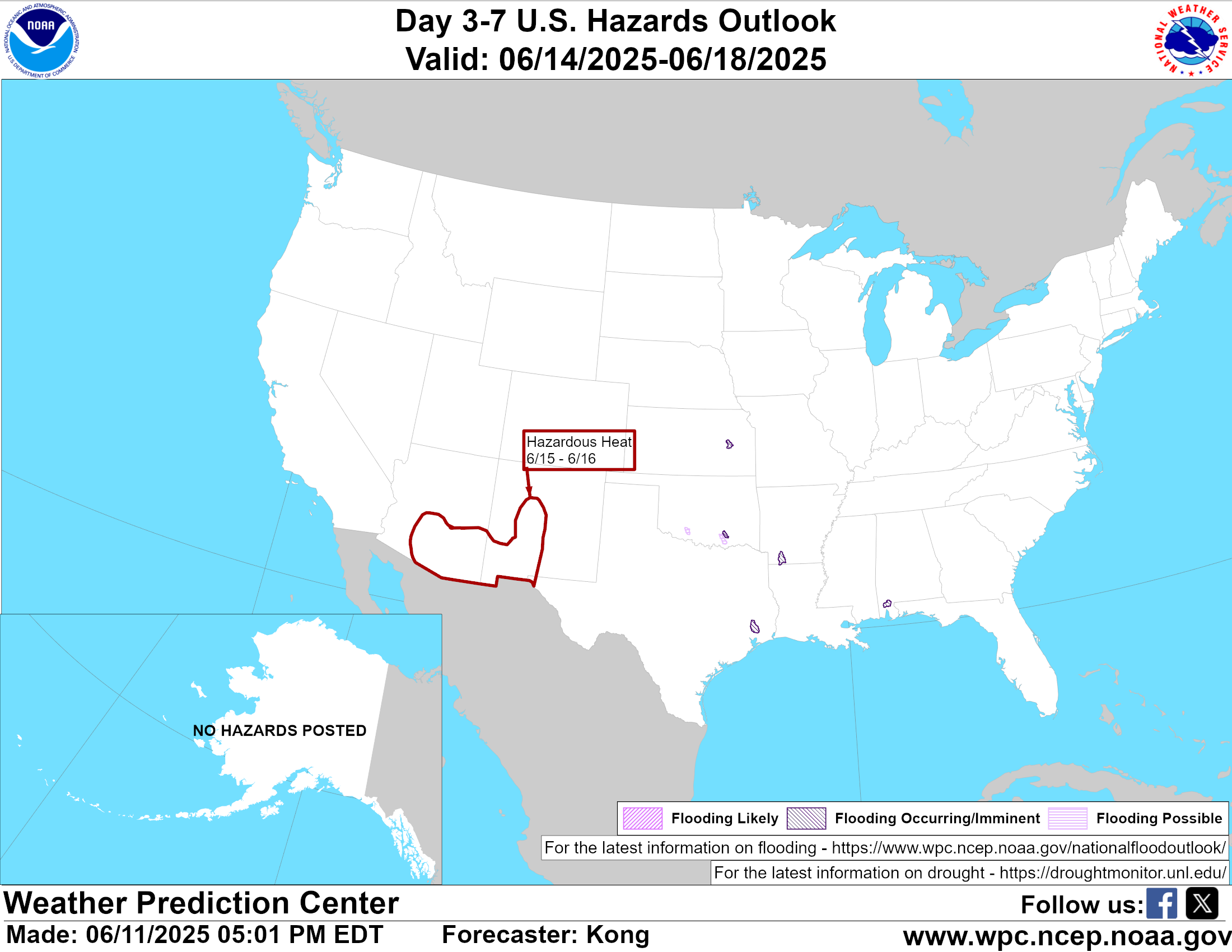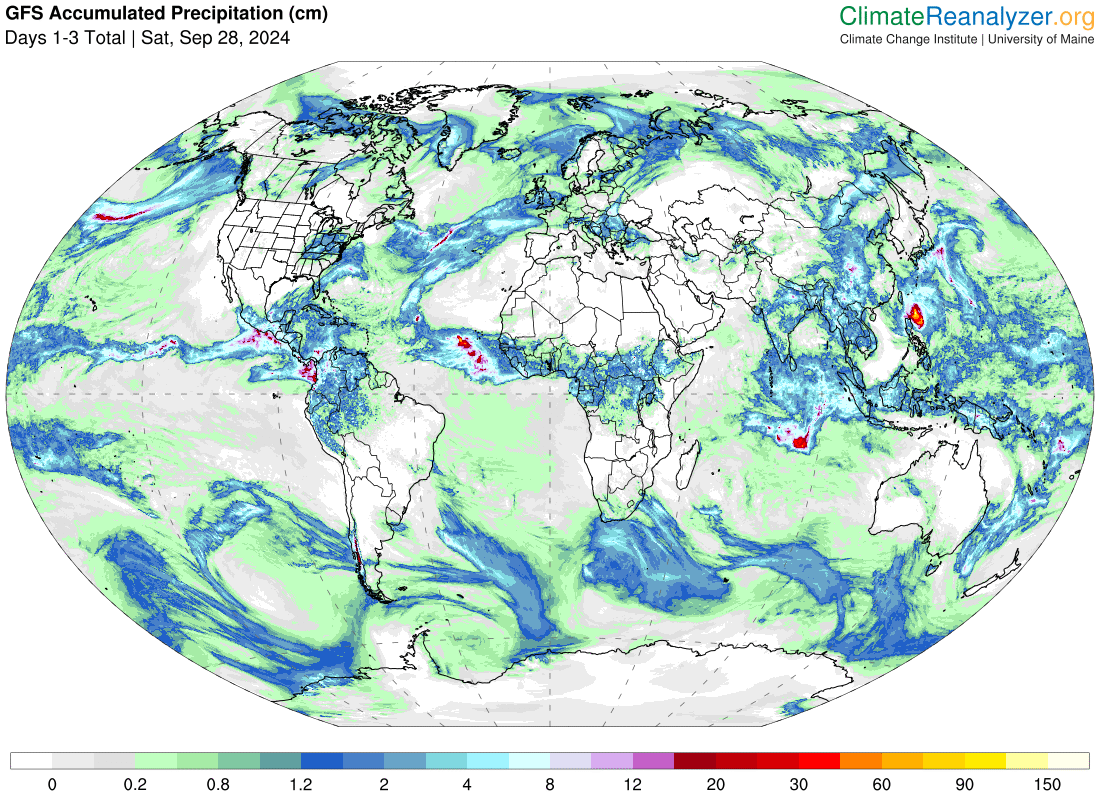Weather Outlook for the U.S. for Today Through at Least 22 Days and a Six-Day Forecast for the World: posted December 14, 2024
This article focuses on what we are paying attention to in the next 48 to 72 hours. The article also includes weather maps for longer-term U.S. outlooks (up to four weeks) and a six-day World weather outlook which can be very useful for travelers.
First the NWS Short Range Forecast. The afternoon NWS text update can be found here after about 4 p.m. New York time but it is unlikely to have changed very much from the morning update. The images in this article automatically update.
Short Range Forecast Discussion
NWS Weather Prediction Center College Park MD
Sat Dec 14 2024
Valid 12Z Sat Dec 14 2024 – 12Z Mon Dec 16 2024…Atmospheric River continues to bring very heavy rain with the potential
for flooding, heavy mountain snow, and gusty winds to central/northern
California Saturday……Heavy mountain snow forecast for portions of the Great Basin and
northern Rockies Saturday……Wintry mix including accumulating freezing rain continues for portions
of the Upper Midwest Saturday, spreading into the central Appalachians
Sunday…A Pacific storm system and accompanying strong flow of
moisture/Atmospheric River continues inland over the West this morning
(Saturday) bringing heavy rainfall, mountain snow, and gusty winds to
central/northern California and the Pacific Northwest. The heaviest
rainfall will continue to focus on portions of central/northern California
through Saturday morning where rainfall rates of 0.5″ to 1″ per hour will
lead to an additional few inches of rainfall over already saturated
ground. The greatest potential for flooding will be around the greater Bay
Area where a Slight Risk of Excessive Rainfall (level 2/4) is in effect.
Heavy snowfall will also continue for higher mountain elevations of the
Coastal Ranges and Sierra Nevada, generally over 5000 feet, where Winter
Storm Warnings have been issued for storm total snowfall of 1-3 feet.
Winter Weather Advisories are also in effect further north into the
Cascades where storm total snowfall of 8-12″, locally 18″, can be
expected. Gusty winds also continue this morning, particularly along the
coast, but all hazardous impacts from the system should begin to taper off
through Saturday afternoon.The system will push further inland through the day Saturday, spreading
moisture and precipitation chances across the Great Basin and Northern
Rockies. A mix of rain and snow can be expected at lower elevations,
though any snow accumulations should remain limited. Heavier snow is
forecast in the mountains, particularly from central Idaho into western
Wyoming, where Winter Storm Warnings are in effect for snowfall of 5-10″,
locally 12″+. Precipitation chances will spread eastward into the northern
High Plains by Saturday night with a wintry mix expected. Some light ice
accretions will be possible through the day Sunday. Some gusty winds are
also likely along the Front Range of the Rockies as the system pushes out
onto the Plains.Further east, an upper-level shortwave/accompanying surface frontal system
will help to trigger showers and thunderstorms across the Ohio, Middle
Missouri, and Lower Mississippi Valleys Saturday, with some moderate to
locally heavy rainfall possible. Storms will likely linger into Sunday
along a trailing frontal boundary, though with lighter amounts expected.
More impactful weather will continue further north as warmer, moist air
overrides colder air at the surface leading to a wintry mix across the
Upper Midwest and Great Lakes. Snow/sleet accumulations should remain
light, but freezing rain is also expected, particularly over eastern Iowa.
An Ice Storm Warning remains in effect through Saturday afternoon for
totals potentially exceeding 0.25″ and leading to tree and power line
damage. The system will continue east on Sunday bringing a wintry mix into
the Southern Appalachians. Similar to Saturday, snow/sleet accumulations
should generally remain light, but some ice accretions over 0.1″ will be
possible.Elsewhere, some showers and thunderstorms can be expected this weekend
along the Atlantic Coast of the Southeast and Florida with a
quasi-stationary frontal boundary in place. Additionally, after a brief
break late Saturday/early Sunday, another system over the Pacific will
bring increasing precipitation chances back to the Pacific Northwest by
Sunday evening. Most of the country will see high temperatures at or above
average this weekend as conditions moderate following a cold frontal
passage across the South and with an upper-level ridge passing over the
central/western U.S. ahead of the next Pacific system. Some of the warmest
temperatures will be in the Southern Plains/Texas with highs in the 60s,
70s, and even some low 80s. Otherwise, temperatures generally range from
the 30s and 40s from the Pacific Northwest and Great Basin east through
the northern Plains, Great Lakes, and Northeast; the 50s and 60s for
California, the central Plains, Ohio Valley, and the South; and 70s for
the Desert Southwest and Florida.


